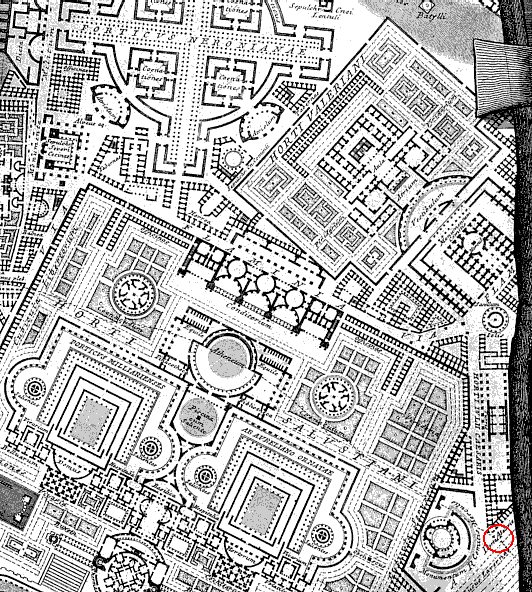...the Salaria [destroyed] in 1871, replaced by the present gate of the same name..
(Platner)
Visigothic seige
"Thus began the third Visigothic siege, actually blockade, of Rome, an event whose outcome, after some eight centuries in which the imperial City had known impunity from foreign foes, created a shock of horror from Bethlehem to Britain. Once again Gothic bravery found itself daunted by the walls of Emperor Aurelian; the treachery that the Romans had feared in the beginning of 408 now in fact admitted the Goths by the Salarian Gate, 24 August 410, but not before the City had once again felt the bite of famine. Some buildings were burned, notably the Palace of Sallust the historian, which stood in its magnificence gardens near the gate of entry, perhaps the Basilica Aemilia in the Roman Forum, and the Palace of Saint Melania and Pinianus on the Caelian Hill, then one of the most fashionable quarters of Rome. Palaces and temples were plundered, some persons were slain or tortured to reveal their presumed hidden wealth; some virgins and other females were raped, but churches, especially the basilicas of Saints Peter and Paul, were spared and made places of refuge."
Stewart Irvin Oost, Galla Placidia Augusta: A Biographical Essay (Chicago: The University of Chicago Press, 1968), pp. 96-7.
Campo Marzio discoveries
2004.03.18
2. the circle/square Porticus Neronianae marks the spot of Alaric's Visigoth camp prior to the (primal) break-in at the Porta Saleria. The 45 degree marks of the Porticus Neronianae marks the four cardinal points. Since the compass of the Ichnographia matches the center of the Porticus Neronianae in size, perhaps Piranesi is here indicating the spot where the "winds" shifted--the historical winds. I now know how the Nolli map corresponds with the Campo Marzio area of the Celian Hill/Horti Salustiani. Platner provides an interesting history of the "Domus Valerianus"--nobody bought it in 404 AD; it sold for almost nothing after Alaric 410 AD; it appears to have become a hospital (which makes sense with regard to Melania's mission.
| |
Re: crossology
2004.04.01 12:47
Not too long ago, countable days actually, I first learned of Melania the Younger, and how her husband's (enormously expensive) family estate [Horti Valeriani] just outside the walls of Rome at the Salarian Gate, was one of the great properties (along with the Gardens of Sallust) that were plundered when Alaric and his Visigoths broke into (at the Salarian Gate) and sacked Rome for the first time. The Visigoths initially camped for many months outside the walls of Rome (near the Salarian Gate) thereby starving the city by disrupting all deliveries of grain from Africa to the city. The Salarian Gate, the Gardens of Sallust, and the Gardens Valeriani are all delineated within Piranesi's Ichnographia Campus Martius right where they are supposed to be. Interesting, right next to this complex of buildings/structures, Piranesi also delineates a Porticus Neronianae, a completely fictitious building in the shape of a large cross within a circle (a composition, coincidentally, that follows the circle/square juncture pattern similar to the Timepiece gauge of the theory of chronosomatics). Within a day of assimilating all this new data, I came to see how the inner circle of the Porticus Neronianiae matches the circle of the compass/north arrow that Piranesi also delineated within the Ichnographia, and I came to see how if you rotate the cross of the Porticus Neronianae 45 degrees, its four points then correspond exactly to the four cardinal points of global direction. The Porticus Neronianae of Piranesi's Ichnographia Campus Martius is the X that marks the spot where the first attacking Visigoths camped. [There are even more 'symbols' to interpret here, like 'shifting winds' and Nero as anti-Christ precursor, but more on that latter.]

Giovanni Battista Piranesi, Ichnographia Campus Martius (1762), detail.
The Horti Valeriani is situated in the upper right corner, directly above the Horti Sallustiani, which occupies the entire bottom portion of the plan. Note that the Aurelian Wall is delineated via a bowing dotted line, which is visible directly above the words 'Horti' and 'Sallustiani'. The position of the Salarian Gate is indicated along the dotted line, here circled in red.
|